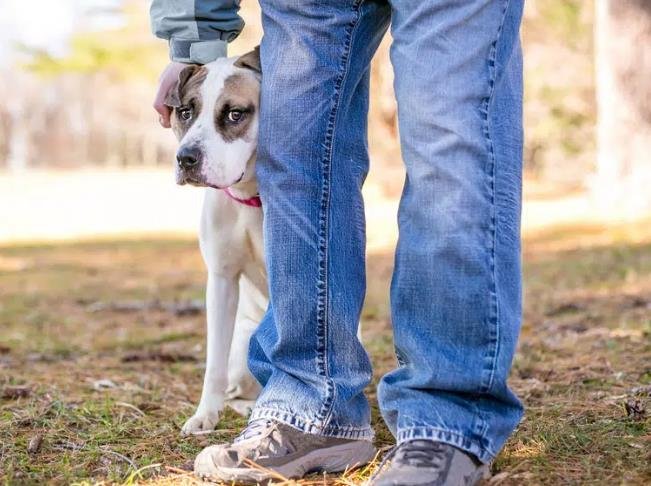Will My Dog Protect You If You’re Attacked? Here’s the Unfiltered Truth
The idea of a loyal dog leaping to its owner’s defense during an attack is a classic trope in movies and stories. But in real life, the answer is far more nuanced. While some dogs might step in, assuming your pet will act as a trained bodyguard could put both of you in danger. Let’s break down what science, experts, and real-world scenarios tell us.
1. Breed Matters, But It’s Not a Guarantee
Dogs bred for guarding or protection work—like German Shepherds, Belgian Malinois, or Rottweilers—have instincts honed over generations to detect and respond to threats. These breeds often exhibit heightened awareness, territoriality, and confidence. However, even within these breeds, individual temperament varies wildly. A poorly socialized German Shepherd might panic in a crisis, while a friendly Rottweiler raised in a calm home might ignore a threat entirely.
On the flip side, breeds not traditionally associated with protection (e.g., Golden Retrievers, Beagles) are less likely to engage physically. That said, many dogs—regardless of breed—will bark, growl, or position themselves between their owner and a perceived threat. This is often a warning signal, not a promise of defense.
2. The Role of Training: Pets vs. Working Dogs
Your average family dog hasn’t been trained to handle high-stakes confrontations. Barking at the mailman or chasing a squirrel doesn’t translate to combatting an attacker. Without professional protection training, most dogs lack the skills to:
Discern between a genuine threat and a harmless stranger.
Bite and release on command (untrained dogs may latch on uncontrollably).
Stay focused amid chaos (e.g., loud noises, sudden movements).
Trained protection dogs undergo years of rigorous conditioning. They’re taught to assess situations, respond to commands like “watch” or “guard,” and disengage when told. These dogs are essentially athletes with a job—far different from the family Lab who naps on the couch.

3. The Bond Between You and Your Dog
A strong bond can motivate a dog to protect you, but it’s not a given. Dogs are hardwired for self-preservation. In a life-threatening situation, even a devoted pet might freeze, flee, or redirect fear-based aggression unpredictably. Stories of dogs intervening often involve clear, immediate threats—like an intruder breaking into a home—where the dog’s territory (and by extension, its “pack”) is invaded. In public settings, dogs are more likely to feel disoriented and less likely to act decisively.
4. Real-World Risks of Untrained Dogs in Attacks
Relying on an untrained dog for protection can backfire:
Escalation: A dog barking or lunging might provoke an attacker to retaliate with greater force.
Legal Nightmares: If your dog bites someone—even in your defense—you could face lawsuits, fines, or have your dog labeled “dangerous” and euthanized. Laws vary by region, but many places impose strict liability on dog owners.
Misread Cues: Dogs often misinterpret situations. A friend playfully grabbing you, a child running toward you, or even a loud argument could trigger a defensive reaction.
5. What Science Says About “Hero Dogs”
Research on canine behavior in crises is limited, but studies suggest dogs prioritize familiar routines and may struggle with novel threats. For example:
A 2017 study in Applied Animal Behaviour Science found that dogs react more to their owner’s emotional state than to external dangers. If you panic, your dog may mirror your stress rather than focus on the threat.
Territorial aggression (protecting the home) is more common and instinctive than defending owners in public, per veterinary behaviorists.
Anecdotal reports of dogs intervening exist, but these are exceptions, not rules. Many involve dogs reacting to clear physical aggression (e.g., an owner being hit or dragged), which triggers a prey-drive response.
How to Improve Your Dog’s Protective Potential (Safely)
If you want a dog that can genuinely help in emergencies, follow these guidelines:
Obedience First: Master basics like “stay,” “come,” and “leave it.” A dog that listens under stress is safer and more controllable.
Professional Protection Training: Work with certified trainers who use ethical methods. Avoid “DIY” guard dog training—it often creates fearful, unstable dogs.
Socialization: Expose your dog to diverse environments, people, and sounds. A confident dog is less likely to overreact.
Home Security: Use your dog’s territorial instincts wisely. Even a small dog’s bark can deter intruders, giving you time to call for help.

Bottom Line
While your dog’s presence might deter a threat—research shows homes with dogs are less likely to be targeted by burglars—it’s reckless to assume they’ll fight for you. True protection requires specialized training, temperament, and controlled scenarios. For personal safety, invest in alarms, self-defense classes, or a monitored security system. Love your dog for companionship, not as a substitute for a bodyguard.
Final Thought: Dogs are emotional beings, not tools. Pushing them into roles they’re unprepared for risks their well-being and yours. Understand their limits, and prioritize their safety as much as your own.








